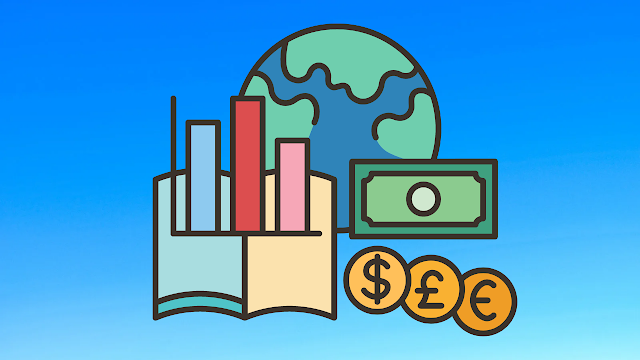What are the Symptoms of an Economic Slowdown?
An economic slowdown, also known as an economic recession, occurs when an economy contracts or experiences negative growth over a period of at least two quarters, typically one quarter and one year. A recession can be considered to be mild if its magnitude is less than 10%, or severe if greater than 10%. If an economy experiences negative growth in two consecutive quarters, it’s said to be in a recession. This can also be called double-dip recession (because of the shape of the curve that represents negative growth).
The Slow Down in GDP Growth
The gross domestic product (GDP) is a basic measure of a country’s economic performance and is defined as the total value of all final goods and services produced within a country in a given period of time. A slowdown in GDP growth can be caused by a number of factors, including:
-Reduced consumer spending
-Lower business investment -Higher savings rates
-Uncertainty about the global economy
-Government policies such as tariffs or tighter immigration rules
Manufacturing Sector Is Down
One of the most important sectors in terms of economic indicators is manufacturing. A downturn in this sector can be a symptom of an impending economic slowdown. When manufacturing output decreases, it’s often a sign that businesses are cutting back on production due to declining demand. This can lead to layoffs and a decrease in consumer spending, which can further exacerbate the problem. If you’re looking for evidence of a recession, this could be one of the first signs.
Home Sales Are Not Good
The health of the housing market is often seen as a leading indicator for the economy as a whole. When people feel confident about their finances, they’re more likely to buy big-ticket items like homes. But when an economic slowdown is on the horizon, home sales usually drop off. The number of U.S. mortgage applications has fallen in 2017 and early 2018, according to Bankrate’s monthly mortgage application survey. It’s because of the higher interest rates, says economist Mark Zandi, co-founder and chief economist at Moody’s Analytics. Rates are up 30 basis points since this time last year. With higher rates on mortgages, lower inventory in many markets, and continued difficulty qualifying for loans due to tighter lending standards, some buyers have been discouraged from even looking at houses.
Interest Rates Are Up
One of the most obvious symptoms of an economic slowdown is rising interest rates. When rates go up, it becomes more expensive to borrow money, which can lead to decreased spending and investment. This can then lead to layoffs and a decrease in consumer confidence, further exacerbating the problem. Other symptoms include declining stock prices, falling home values, and increases in unemployment. Another symptom of an economic slowdown is a rise in the number of bankruptcies. Increased job losses, declining property values, and less wealth available for borrowing due to lower incomes all contribute to this phenomenon. The financial industry also slows down during times of recession because people do not have as much income or assets with which they can invest.
Unemployment Rate Is High
The unemployment rate is one of the most common indicators of an economic slowdown. When people lose their jobs, they have less money to spend, which can lead to a decrease in demand for goods and services. This can then lead to more job losses and further decrease in demand. Additionally, businesses may start to lay off workers or reduce hours in order to cut costs. This can result in even more people becoming unemployed. A high unemployment rate leads to lower incomes and higher levels of poverty.
The ratio between the number of unemployed individuals and the total labor force is called the unemployment rate, defined as follows: the percentage of unemployed persons expressed as a percentage of the civilian labor force. The Bureau defines some important measurements including: (1) U-3: Persons unemployed 15 weeks or longer; (2) U-4: Persons unemployed 14 weeks or longer plus discouraged workers; (3) U-5: Persons unemployed 14 weeks or longer plus discouraged workers plus part time workers who want full time work; (4) U-6: All persons marginally attached to the labor force plus all persons employed part time for economic reasons.
Personal Spending Remains Weak
Personal spending accounts for a large portion of economic activity, so when consumers rein in their spending, it can act as a drag on the economy. One symptom of an impending economic slowdown is when personal spending growth weakens. This can be seen in declining retail sales, fewer restaurant and bar visits, and reduced spending on big-ticket items like cars and vacations. Additionally, when people feel less confident about the future, they may start saving more and spending less. This decreased consumption can lead to further economic weakness.
Foreign Trade Has Slowed
Foreign trade has always been one of the most important indicators of a country’s economic health. A slowdown in foreign trade is often one of the first signs that an economy is starting to slow down. In 2014, America exported $2.22 trillion worth of goods and services to other countries, and imported $2.45 trillion worth, for a total trade deficit of about $233 billion (in other words, we sold more than we bought). In 2015, this figure fell by about $100 billion, as exports fell from $2.21 trillion to $1.94 trillion while imports remained steady at around $2.45 trillion (imports were already high because they include the cost of oil). Some analysts expect this trend to continue over the next few years as American companies will be less likely to invest overseas and our import reliance increases – which means fewer jobs for American workers because more goods will be coming from abroad instead of being made here at home

Leave a Reply